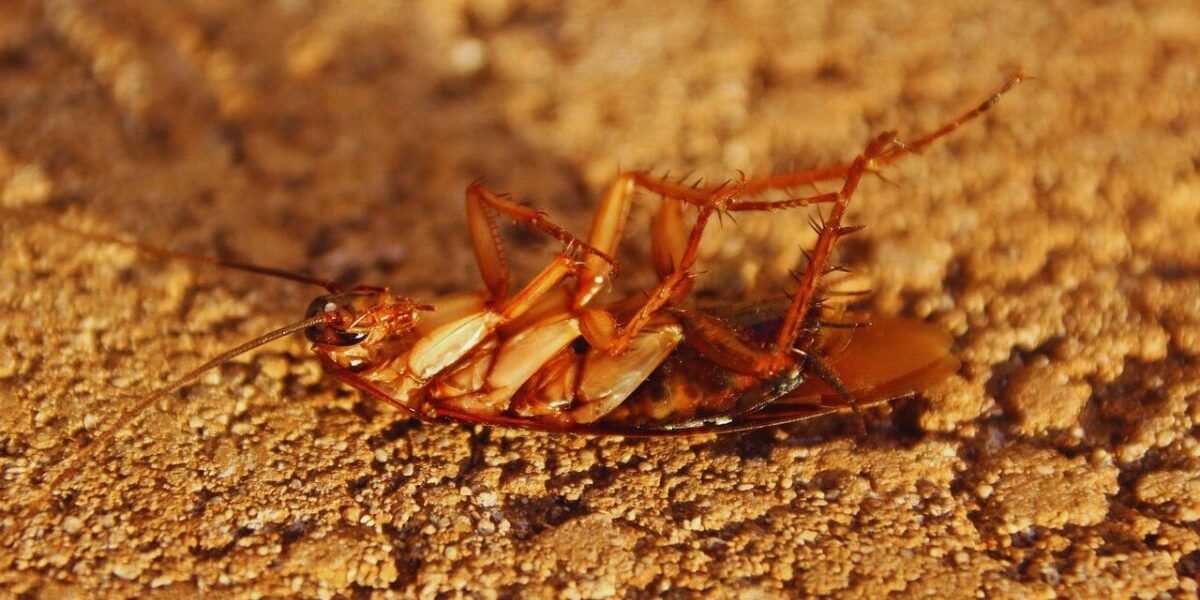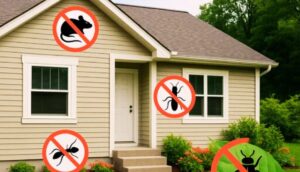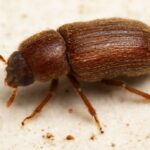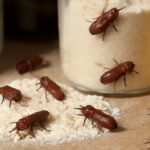A Practical Guide to a Pest-Free Home
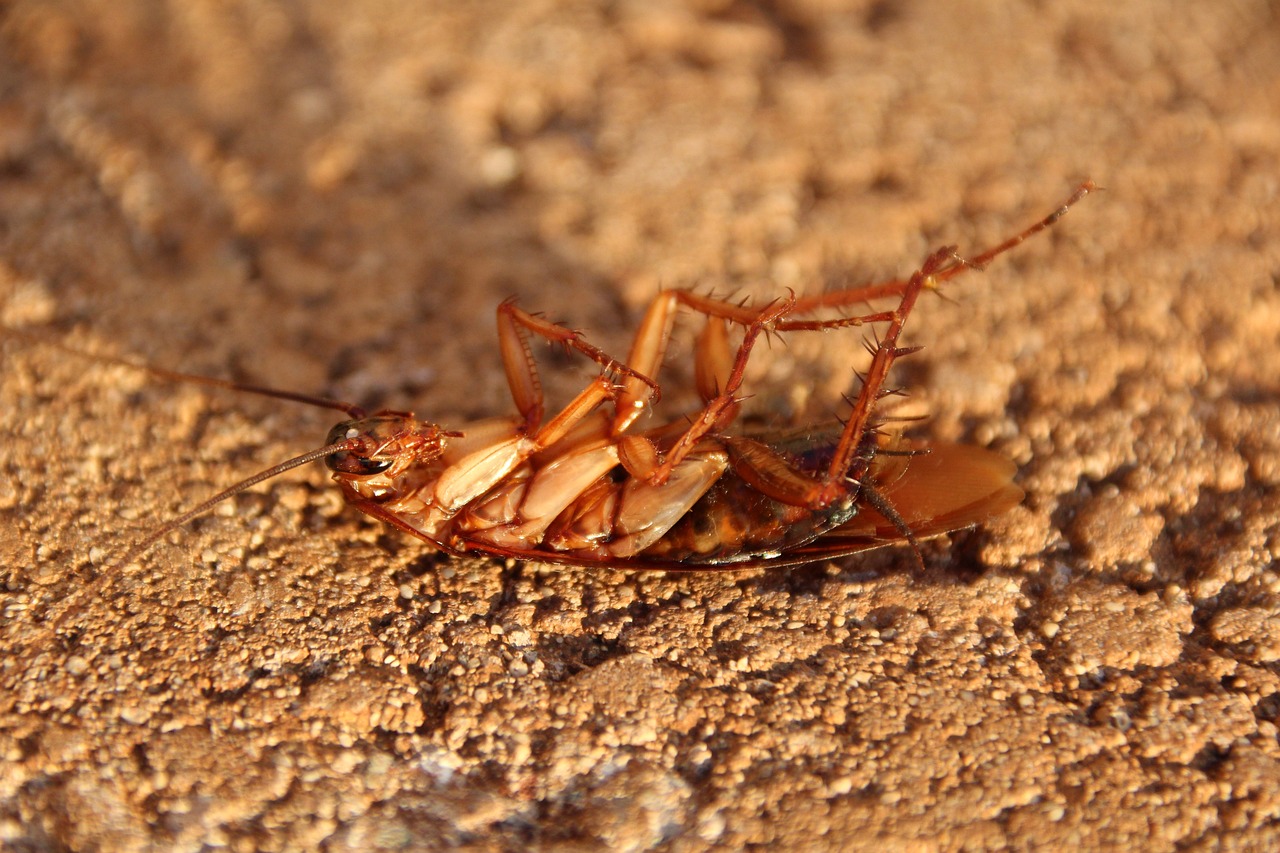
Cockroaches are more than just unwelcome guests—they’re persistent, sneaky, and tough to evict once they’ve settled in. Found in kitchens, bathrooms, and even electronics, these pests can spread bacteria, trigger allergies, and make your home feel downright unsanitary. If you’ve spotted a few (or more than a few), you’re probably wondering how to send them packing—permanently.
In this guide, you’ll find real, effective strategies to kick roaches out and keep them out. Whether you prefer natural remedies or professional-grade tools, we’ll walk you through your options step by step.
As an Amazon Associate, I earn from qualifying purchases
Why Are Roaches in Your Home?
Before tackling the infestation, it’s helpful to understand what’s drawing roaches inside in the first place. These pests don’t just show up randomly—they’re looking for the basics: food, water, and a place to hide.
-
Food sources: Crumbs, grease, pet food, and even cardboard glue can attract roaches.
-
Water: They love moisture. Leaky faucets, damp rags, and condensation are magnets for them.
-
Clutter: Stacks of papers, old boxes, and other messes offer perfect hiding spots.
-
Entry points: Small cracks, unsealed gaps, and even groceries can be entryways for these insects.
Identifying what’s luring them in is half the battle. Once you’ve got that figured out, it’s time to take action.
Step 1: Do a Deep Clean
Roaches don’t stick around if they can’t find food or water. That means the first and most important step is to make your home less hospitable.
Cut Off Their Food Supply
-
Wipe down kitchen counters after every meal.
-
Sweep and vacuum regularly—especially under appliances.
-
Store dry goods in sealed containers (no more open cereal boxes).
-
Don’t leave dirty dishes in the sink overnight.
-
Pick up pet food dishes when your pets are done eating.
Eliminate Moisture
-
Fix leaky pipes, drippy faucets, and any standing water sources.
-
Check under sinks and behind toilets for hidden damp spots.
-
Use a dehumidifier in moist areas like basements or laundry rooms.
Step 2: Block Their Way In
Roaches are pros at squeezing through the tiniest of cracks. Stop them in their tracks by sealing off their entry points.
-
Use caulk or expanding foam to seal gaps in walls, baseboards, and behind sinks.
-
Install weather stripping and door sweeps on exterior doors.
-
Repair window screens and plug holes around utility lines or vents.
-
Unpack delivery boxes outside or in the garage, and inspect bags before bringing them indoors.
Step 3: Set Baits and Traps
Once you’ve cut off food and sealed your home, it’s time to target the bugs themselves. This is where traps and baits shine.
Bait Stations
These contain slow-acting poison that roaches bring back to their nests, spreading it to others. Place them near sinks, under the fridge, or behind the stove.
Sticky Traps
Use these to monitor problem areas. They won’t solve the infestation, but help track where roaches are most active.
Gel Baits
Gel baits can be applied directly into cracks and hard-to-reach spots. Roaches eat the gel and return to the colony, infecting others. Be consistent and reapply as needed.
Step 4: Try Natural Roach Remedies
Prefer a chemical-free approach? Nature offers some surprisingly effective pest control options.
Diatomaceous Earth (DE)
This powder looks harmless, but it is lethal to roaches. It damages their exoskeleton, leading to dehydration. Dust it lightly in corners, under appliances, and along walls—but avoid wet areas, as moisture reduces its effectiveness.
Essential Oils
Some essential oils have been shown to repel roaches, especially:
-
Peppermint oil: Strong and overwhelming for bugs.
-
Lavender oil: Doubles as a roach repellent and room freshener.
-
Tea tree oil: Antimicrobial and unappealing to pests.
Mix with water and a bit of dish soap, then spray into roach-prone zones.
Baking Soda + Sugar
Mix equal parts and sprinkle the blend in small dishes. The sugar draws them in, and the baking soda reacts with their digestive systems, resulting in death.
Step 5: Use Chemical Options Wisely
If natural methods aren’t cutting it, or the infestation is large, it’s time to bring in stronger tools.
Sprays
Fast-acting roach sprays kill on contact but may not reach hidden nests. Use them for quick knockdowns, especially when you spot a cluster.
Insect Growth Regulators (IGRs)
These don’t kill roaches outright but disrupt their life cycle, preventing them from reproducing. Combine IGRs with bait for more comprehensive control.
Hire a Pro
When things are out of hand, don’t hesitate to call pest control. Professionals can identify nest sites, use industrial-grade treatments, and help you build a long-term prevention strategy.
Step 6: Prevent Future Infestations
Getting rid of roaches is one thing—keeping them gone is another. Here’s how to keep your home a no-go zone:
-
Stick to a cleaning routine, especially in the kitchen.
-
Repair water leaks as soon as you find them.
-
Declutter regularly and recycle cardboard and paper quickly.
-
Reseal cracks as they appear.
-
Avoid leaving food (even pet food) out overnight.
10 Frequently Asked Questions (FAQs)
1. What’s the fastest DIY method to kill cockroaches?
One of the quickest DIY fixes is a homemade baking soda and sugar mix. Just combine equal parts and place small amounts in shallow lids near roach-prone areas. The sugar attracts them, and the baking soda reacts with their digestive system—goodbye, roaches!
2. Can I use vinegar to kill cockroaches?
Vinegar is great for cleaning and removing food smells that attract roaches, but it doesn’t kill them. However, pairing vinegar with other methods—like boric acid or bait traps—can help you stay one step ahead.
3. Is boric acid safe and effective for a DIY roach treatment?
Yes, boric acid is a go-to for DIYers! It’s a powder that sticks to roaches’ legs. When they groom themselves, they ingest it and die. Just use it sparingly in cracks, under appliances, and away from pets and kids.
4. How does diatomaceous earth work on roaches?
Food-grade diatomaceous earth is a natural powder that damages roaches’ exoskeletons, drying them out. Sprinkle it in dry areas like baseboards, behind the fridge, or under the sink. It’s non-toxic to humans and pets when used correctly.
5. What household items can I use to make a roach trap?
Try this easy DIY trap: Place a piece of bread soaked in beer inside a glass jar. Wrap the outside of the jar with tape (so roaches can climb in) and leave it overnight. Roaches get in—but they can’t climb out!
6. Can I make my own roach spray at home?
Yes! Mix water with a few drops of essential oils like peppermint, eucalyptus, or tea tree oil. While this won’t kill roaches on contact, it does help repel them from certain areas. For extra punch, add a bit of dish soap to the mix.
7. Does bleach kill cockroaches?
Bleach might kill roaches if you spray it right on them, but it’s not the safest or most effective way to deal with an infestation. It’s also not a good long-term solution. Plus, the fumes can be harsh. Stick to baiting and trapping for better results.
8. What should I clean to make DIY roach control more effective?
Start with your kitchen—wipe counters, sweep floors, and clean behind appliances. Take out the trash regularly and never leave pet food out overnight. A clean home makes your DIY treatments work faster by removing food sources.
9. How fast do DIY cockroach methods usually work?
You might see results within a few days, especially with baits and powders. But total elimination usually takes a couple of weeks. Keep applying treatments and refreshing traps until you stop seeing signs of roaches.
10. Are DIY methods enough, or should I call a pro?
DIY methods work great for light to moderate infestations. If you’re seeing dozens of roaches daily—or they keep coming back despite your best efforts—it might be time to call in a professional for a deeper treatment.
Conclusion
Roaches are survivors, but they’re not invincible. With persistence, a combination of cleaning, sealing, baiting, and possibly professional support, you can eliminate them—and keep them gone for good. Don’t rely on just one trick; use a mix of methods for the best results. Consistency is the secret weapon. Stay vigilant, and you’ll reclaim your home from these unwanted intruders.

